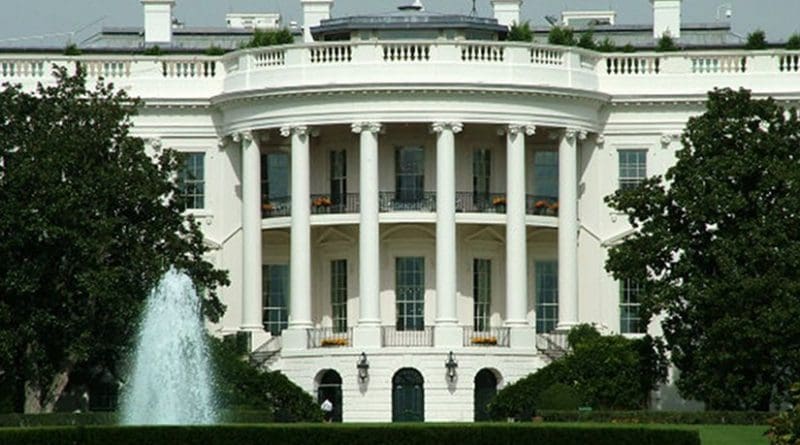White House Takes Issue With Government Document Forecasting Doubling Of Coronavirus Cases
By VOA
By Ken Bredemeier, Chris Hannas and Steve Herman
The White House is downplaying a U.S. government report projecting a near doubling of COVID-19 daily deaths in the United States by June 1.
White House spokesman Judd Deere took issue Monday with a Centers for Disease Control and Prevention report that also forecasts about 200,000 new coronavirus cases each day by the end of the month, up from 25,000 cases now.
The information is based on government modeling pulled together in chart form by the Federal Emergency Management Agency and published Monday by The New York Times.
In a statement Monday, Deere said it is not a “White House document nor has it been presented to the Coronavirus Task Force or gone through interagency vetting. This data is not reflective of any of the modeling done by the task force or data that the task force has analyzed.”
The spokesman said, “the health of the American people remains President Trump’s top priority, and that will continue as we monitor the efforts by states to ease restrictions.”
The government report said the number of coronavirus fatalities could reach 3,000 a day in four weeks, up sharply from the current figure of about 1,750, according to the Times.
The United States has sought to combat the spread of the coronavirus for about seven weeks, but President Donald Trump has ended his stay-at-home directives that shut down much of the U.S. economy through April.
Numerous state governors have eased restrictions on business closures as the calendar turned to May, permitting hair and nail salons, gyms, restaurants and shops to reopen in their states, although businesses by the thousands remain closed.
Scott Gottlieb, Trump’s former food and drug commissioner, told CBS News’ “Face the Nation” show on Sunday that “while mitigation didn’t fail, I think it’s fair to say that it didn’t work as well as we expected. We expected that we would start seeing more significant declines in new cases and deaths around the nation at this point. And we’re just not seeing that.”
Gottlieb said Americans “may be facing the prospect that 20,000, 30,000 new cases a day diagnosed becomes the new normal.”
Trump once predicted the number of new U.S. coronavirus cases would quickly fall to nothing, but at least 1,000 people with the virus, and sometimes more than 2,000, have died every day for the last month. Much more recently, he predicted the final U.S. death toll would be between 60,000 and 70,000.
But at a virtual town hall he participated in Sunday night at the Lincoln Memorial in Washington, Trump said, “We’re going to lose anywhere from 75, 80 to 100,000 people. That’s a horrible thing.”
As the Senate prepared to reconvene Monday, Trump said the federal government could double its current $3 trillion in emergency aid. So far, those funds have gone to help small businesses stay afloat, provide supplies to hospitals, and put money in the hands of taxpayers.
“There is more help coming,” Trump said.
Senate Majority Leader Mitch McConnell said his chamber was returning to work on continued COVID-19 action as well as other urgent matters.
Leaders in the House of Representatives have thus far not announced plans to meet in Washington, while asking Capitol physicians to share guidance on how to do so safely.
The United States leads the world with more than 1.1 million confirmed cases and about 68,000 deaths.
Public health officials have expressed concern about the number of Americans who are failing to listen to social distancing orders and states relaxing stay-at-home guidelines before there is a sustained drop in the number of coronavirus cases.
Easing lockdown restrictions
This week, more states join those relaxing lockdown restrictions, including Florida’s move allowing restaurants and shops to operate with limits on how many people can be inside starting Monday.
By Tuesday, more than 30 of the 50 U.S. states will allow some form of reopening.
That has been a priority for Trump as economic activity has slowed significantly and more than 30 million people have lost their jobs.
“What I want to do is, number one, we’re getting rid of the virus. We have to do it,” Trump said at the town hall Sunday. “We’re working with the governors, we’re getting rid of the virus, but we’ve got to put our country back to work.”
No U.S. state has met the original White House directive that they see a continuous two-week decline in the number of coronavirus cases before allowing businesses to reopen or people to gather in public places.
Dr. Deborah Birx, a leading member of the White House coronavirus task force, told Fox News Sunday that the best advice for Americans was to continue “steady washing of hands” and to “shelter in place.”
She also said that while it is possible the race to develop and test could result in a coronavirus vaccine by next January, there are no assurances of meeting that timetable.
Trump was more optimistic, saying Sunday night he thinks there will be a vaccine available by the end of 2020.

